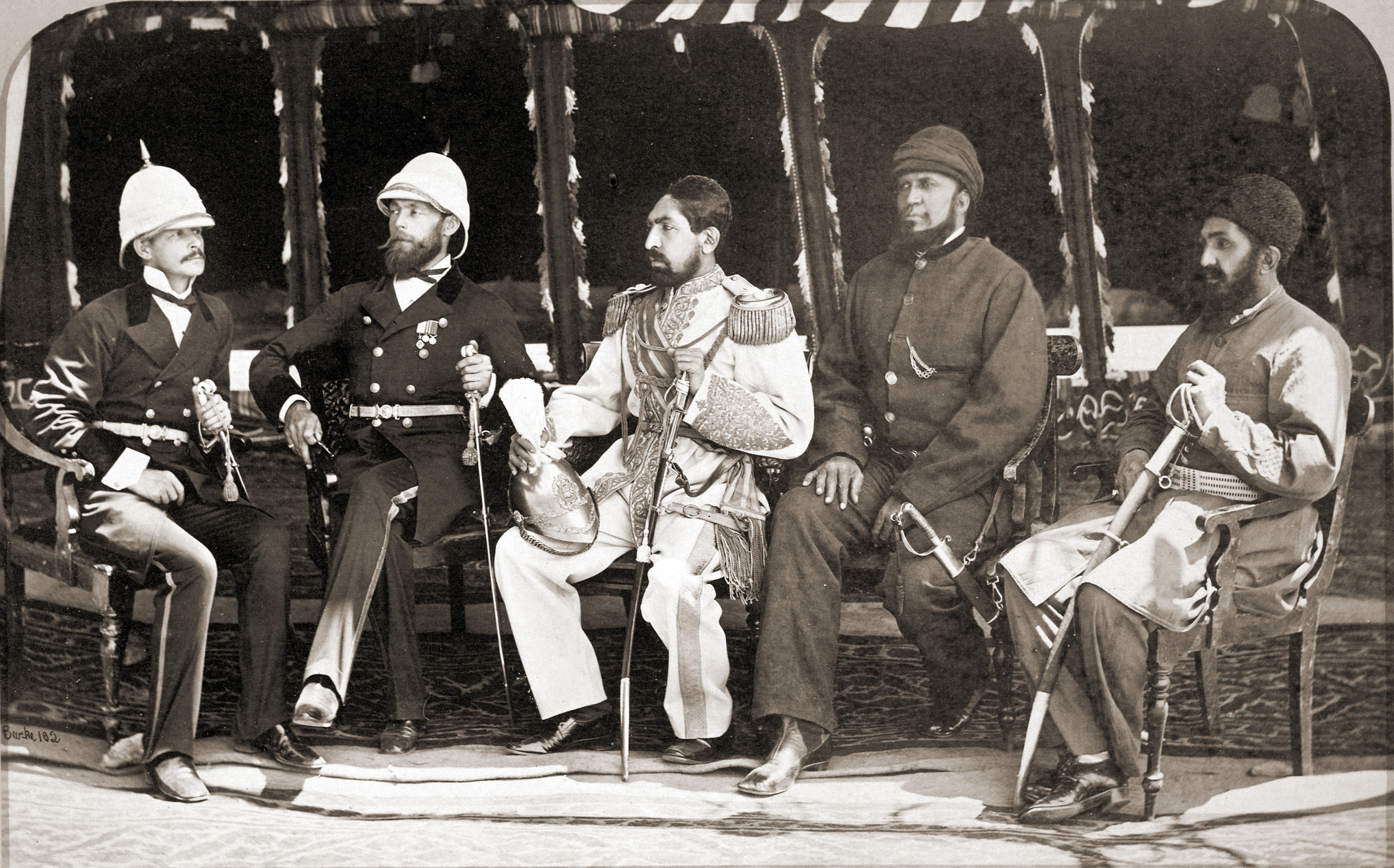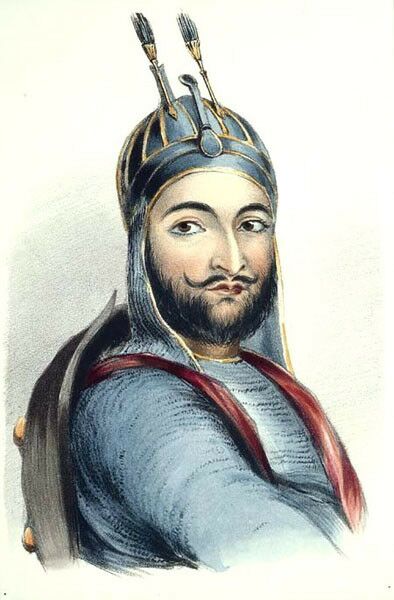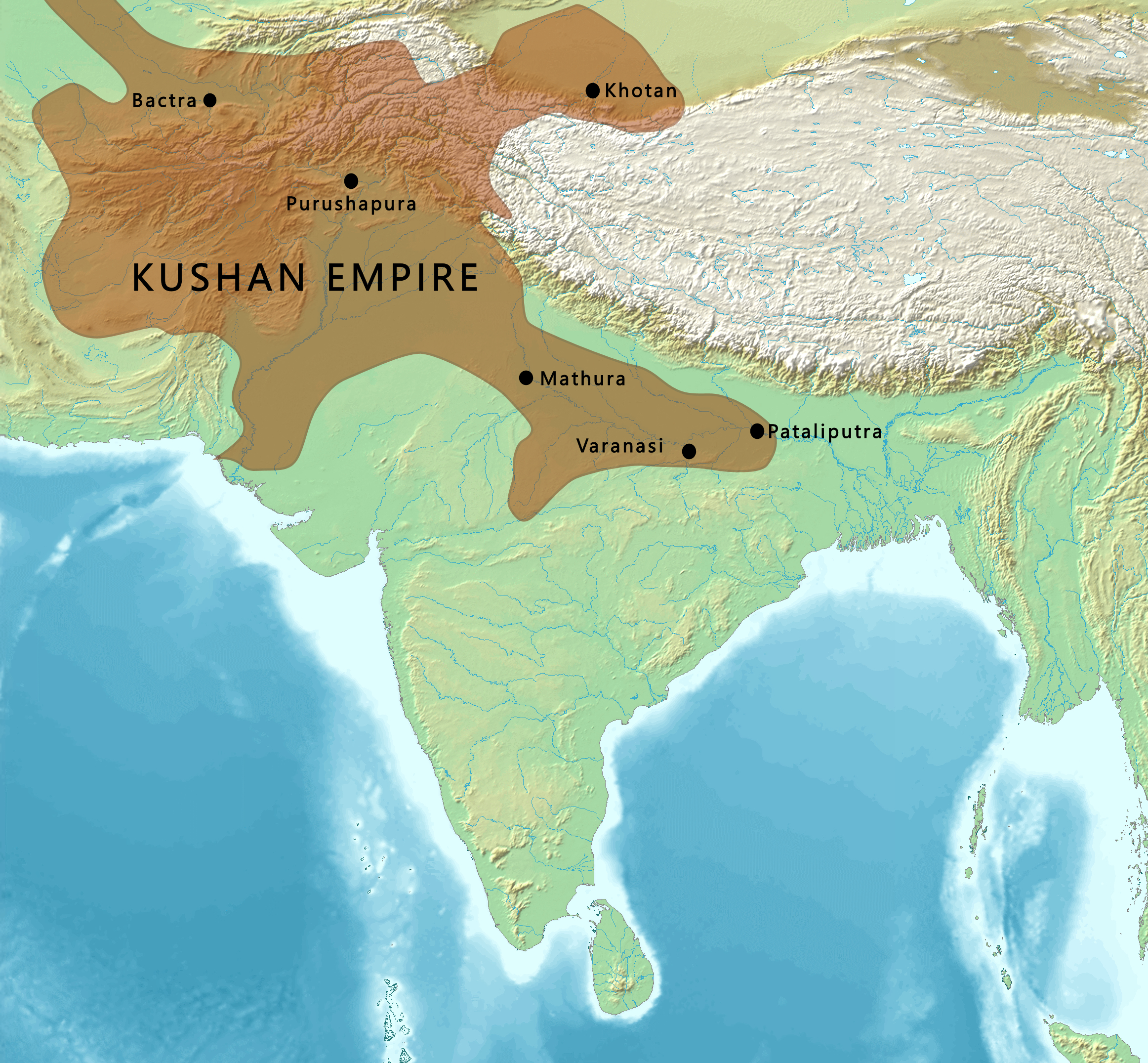|
Gandamak
Gandamak is a village of Afghanistan located between Kabul and Jalalabad, from Jalalabad on the old road to Kabul. History During the retreat from Kabul of General Elphinstone's army in 1842, a hill near Gandamak was the scene of the Battle of Gandamak, during which the last survivors of the force—twenty officers and forty-five British soldiers of the 44th East Essex Regiment—were killed, leaving only one survivor, an assistant surgeon named William Brydon. Gandamak is also known for the Treaty of Gandamak, which was signed here on 26 May 1879, between His Highness Muhammad Yakub Khan, Amir of Afghanistan and its dependencies and Sir Louis Cavagnari of the British government's India Office, which marked the end of the first portion of the Second Anglo-Afghan War. See also *Nangarhar Province Nangarhār (Pashto: ; Dari: ), also called Nangrahar or Ningrahar, is one of the 34 provinces of Afghanistan, located in the eastern part of the country and Border, borderin ... [...More Info...] [...Related Items...] OR: [Wikipedia] [Google] [Baidu] |
Treaty Of Gandamak
The Treaty of Gandamak (Dari: معاهده گندمک, Pashto: د گندمک تړون) officially ended the first phase of the Second Anglo-Afghan War. The Afghan emir Mohammad Yaqub Khan ceded various frontier areas as well as Afghanistan's control of its foreign affairs to the British Raj. It was signed on 26May 1879 by King Mohammad Yaqub Khan of Afghanistan and Sir Louis Cavagnari of the British Government of India at a British army camp near the village of Gandamak, about east of Kabul. The treaty was ratified by Lord Edward Robert Bulwer-Lytton, Viceroy of India, on 30 May 1879. Most historical writings consider the Treaty of Gandamak as the prelude to the second phase of the Second Anglo-Afghan War, 1879–1880. As result of the British victory at the Battle of Kandahar in 1880 the treaty was reaffirmed and the British appointed Abdur Rahman, a British opponent, as Emir of Afghanistan. Later during Abdur Rahman's reign, he constantly opposed the British and forced ... [...More Info...] [...Related Items...] OR: [Wikipedia] [Google] [Baidu] |
Battle Of Gandamak
The Battle of Gandamak on 13 January 1842 was a defeat of British forces by Afghan tribesmen in the 1842 retreat from Kabul of General Elphinstone's army, during which the last survivors of the force—twenty officers and forty-five British soldiers of the 44th East Essex Regiment—were killed. The biggest single surviving group of men, consisting of 20 officers and 45 European soldiers, mostly infantry from the 44th Regiment of Foot, tried to press on but found themselves surrounded on a snowy hillock near the village of Gandamak. With only 20 working muskets and two shots per weapon, the troops refused to surrender. A British sergeant is said to have cried "not bloody likely!" when the Afghans tried to persuade the soldiers they would spare their lives.Terence R. Blackburn. David, The extermination of a British army: the retreat from Cabul, 2008 APH Publishing Corporation. p.121 Sniping then began, followed by a series of rushes; soon the hillock was overrun by tribesmen. ... [...More Info...] [...Related Items...] OR: [Wikipedia] [Google] [Baidu] |
1842 Retreat From Kabul
The 1842 retreat from Kabul was the retreat of the British and East India Company forces from Kabul during the First Anglo-Afghan War. An uprising in Kabul forced the then-commander, Major-General William Elphinstone, to fall back to the British garrison at Jalalabad. In early January 1842, as the army and its numerous dependants and camp followers began their march, they came under attack from Afghan tribesmen. Many in the column died of exposure, frostbite or starvation, or were killed during the fighting. At the beginning of the conflict, British and East India Company forces had defeated the forces of Afghan Emir Dost Mohammad Barakzai and in 1839 occupied Kabul, restoring the former ruler, Shah Shujah Durrani, as emir. However a deteriorating situation made their position more and more precarious, until an uprising in Kabul forced Maj. Gen. Elphinstone to withdraw. To this end he negotiated an agreement with Wazir Akbar Khan, one of the sons of Dost Mohammad Barakzai, by ... [...More Info...] [...Related Items...] OR: [Wikipedia] [Google] [Baidu] |
Second Anglo-Afghan War
The Second Anglo-Afghan War (Dari: جنگ دوم افغان و انگلیس, ) was a military conflict fought between the British Raj and the Emirate of Afghanistan from 1878 to 1880, when the latter was ruled by Sher Ali Khan of the Barakzai dynasty, the son of former Emir Dost Mohammad Khan (Emir of Afghanistan), Dost Mohammad Khan. The war was part of the Great Game between the British Empire, British and Russian empire, Russian empires. The war was split into two campaigns – the first began in November 1878 with the British Raj, British invasion of Afghanistan from British Raj, India. The British were quickly victorious and forced the Amir – Sher Ali Khan to flee. Ali's successor Mohammad Yaqub Khan immediately sued for peace and the Treaty of Gandamak was then signed on 26 May 1879. The British sent an envoy and mission led by Louis Cavagnari, Sir Louis Cavagnari to Kabul, but on 3 September this mission was massacred and the conflict was reignited by Mohammad Ayub Khan ... [...More Info...] [...Related Items...] OR: [Wikipedia] [Google] [Baidu] |
Muhammad Yakub Khan
Mohammad Yaqub Khan (Pashto/Dari: ; 1849November 15, 1923) was Emir of Afghanistan from February 21 to October 12, 1879. He was a Pashtun and the son of the previous ruler, Sher Ali Khan. Mohammad Yaqub Khan was appointed as the governor of Herat province in 1863. In 1870, he decided to rebel against his father but failed and was imprisoned in 1874. The Second Anglo-Afghan War erupted in 1878, leading Sher Ali Khan to flee the capital of Afghanistan, and eventually die in February 1879 in the north of the country. As Sher Ali's successor, Yaqub signed the Treaty of Gandamak with Britain in May 1879, relinquishing sole control of Afghanistan foreign affairs to the British Empire. An uprising against this agreement led by Ayub Khan in October of the same year, led to the abdication of Yaqub Khan. He was succeeded by the new ruler, Amir Ayub Khan. Treaty of Gandamak During the Second Anglo-Afghan War, the British defeated the Amir Sher Ali's forces, wintered in Jalalabad, waitin ... [...More Info...] [...Related Items...] OR: [Wikipedia] [Google] [Baidu] |
William Brydon
William Brydon (10 October 1811 – 20 March 1873) was a British doctor who was assistant surgeon in the British East India Company Army during the First Anglo-Afghan War, famous for reportedly being the only member of an army of 4,500 men, plus 12,000 accompanying civilians, to reach safety in Jalalabad at the end of the 1842 retreat from Kabul. Early life Brydon was born in London, second son and second of eight children of merchant William Brydon (1761-1843) and Mary Ann (1783-1841), née Comberbach. He studied medicine at University College London and at the University of Edinburgh. He subsequently was appointed as a surgeon in the Bengal Army of the British East India Company. Retreat from Kabul In 1841 William Brydon was posted to Afghanistan as the assistant surgeon of Shah Shuja's Contingent—a British officered infantry force recruited in India to provide protection for the British-backed ruler in Kabul. This mercenary unit formed part of a combined British and I ... [...More Info...] [...Related Items...] OR: [Wikipedia] [Google] [Baidu] |
44th (East Essex) Regiment Of Foot
The 44th Regiment of Foot was an infantry regiment in the British Army, raised in 1741. Under the Childers Reforms it amalgamated with the 56th (West Essex) Regiment of Foot to form the Essex Regiment in 1881. History Early history The regiment was raised by Colonel James Long as James Long's Regiment of Foot in 1741. The regiment saw active service at the Battle of Prestonpans in September 1745 during the Jacobite rising. Ranked as the 55th Regiment of the Line in 1747, the regiment was renamed the 44th Regiment of Foot in 1751. It embarked for North America in January 1755 for service in the French and Indian War and took part in the Battle of the Monongahela where Colonel Sir Peter Halkett was killed while commanding the regiment. The regiment went on to fight at the Battle of Carillon in July 1758, the Battle of Fort Niagara in July 1759 and finally the Montreal Campaign in July to September 1760 before returning home in 1765. The regiment returned to North America ... [...More Info...] [...Related Items...] OR: [Wikipedia] [Google] [Baidu] |
Afghanistan
Afghanistan, officially the Islamic Emirate of Afghanistan, is a landlocked country located at the crossroads of Central Asia and South Asia. It is bordered by Pakistan to the Durand Line, east and south, Iran to the Afghanistan–Iran border, west, Turkmenistan to the Afghanistan–Turkmenistan border, northwest, Uzbekistan to the Afghanistan–Uzbekistan border, north, Tajikistan to the Afghanistan–Tajikistan border, northeast, and China to the Afghanistan–China border, northeast and east. Occupying of land, the country is predominantly mountainous with plains Afghan Turkestan, in the north and Sistan Basin, the southwest, which are separated by the Hindu Kush mountain range. Kabul is the country's capital and largest city. Demographics of Afghanistan, Afghanistan's population is estimated to be between 36 and 50 million. Ancient history of Afghanistan, Human habitation in Afghanistan dates to the Middle Paleolithic era. Popularly referred to as the graveyard of empire ... [...More Info...] [...Related Items...] OR: [Wikipedia] [Google] [Baidu] |
William George Keith Elphinstone
Major-General William George Keith Elphinstone CB (26 January 1782 – 23 April 1842) was a Scottish officer of the British Army during the 19th century, remembered for service in the highest and lowest actions of the British Army. Elphinstone commanded the 33rd Foot at the Battle of Waterloo, and the British force at Kabul during the First Anglo-Afghan War. Biography Early life and military career He was born in Scotland in 1782, the son of William Fullerton-Elphinstone, who was a director of the East India Company, and nephew of Admiral George Keith Elphinstone, 1st Viscount Keith. Elphinstone entered the British Army in 1804 as a lieutenant; he saw service throughout the Napoleonic Wars, rising to the rank of lieutenant-colonel by 1813, when he became commander of the 33rd Regiment of Foot, which he led at the Battle of Waterloo in 1815. For his actions at Waterloo, Elphinstone was made a Companion of the Bath, as well as a knight of the Dutch Military Order of Willia ... [...More Info...] [...Related Items...] OR: [Wikipedia] [Google] [Baidu] |
Louis Cavagnari
Sir Pierre Louis Napoleon Cavagnari (4 July 1841 – 3 September 1879) was a British soldier and military administrator. Cavagnari was the son of Count Louis Adolphus Cavagnari, of an old family from Parma in the service of the Bonaparte family, by his marriage in 1837 with an Anglo-Irish woman, Caroline Lyons-Montgomery. Cavagnari was born at Stenay, in the Meuse département, France, on 4 July 1841. He was killed on 3 September 1879 during the siege of the British Residency (then at Bala Hissar) in Kabul in Afghanistan. He was educated at Christ's Hospital school, starting at the age of 10 years. He had obtained naturalization as a British subject, and entered the military service of the East India Company. After passing through college at the Addiscombe Military Seminary, he served through the Oudh campaign against the mutineers in 1858 and 1859. In 1861 he was appointed an assistant commissioner in the Punjab region of British India, and in 1877 became deputy commissioner ... [...More Info...] [...Related Items...] OR: [Wikipedia] [Google] [Baidu] |
Kabul
Kabul is the capital and largest city of Afghanistan. Located in the eastern half of the country, it is also a municipality, forming part of the Kabul Province. The city is divided for administration into #Districts, 22 municipal districts. A 2025 estimate puts the city's population at 7.175 million. In contemporary times, Kabul has served as Afghanistan's political, cultural and economical center. Rapid urbanisation has made it the country's primate city and one of the largest cities in the world. The modern-day city of Kabul is located high in a narrow valley in the Hindu Kush mountain range, and is bounded by the Kabul River. At an elevation of , it is one of the List of capital cities by elevation, highest capital cities in the world. The center of the city contains its old neighborhoods, including the areas of Khashti Bridge, Khabgah, Kahforoshi, Saraji, Chandavel, Shorbazar, Deh-Afghanan and Ghaderdiwane. Kabul is said to be over 3,500 years old, and was mentioned at the ... [...More Info...] [...Related Items...] OR: [Wikipedia] [Google] [Baidu] |
Jalalabad
Jalalabad (; Help:IPA/Persian, [d͡ʒä.lɑː.lɑː.bɑːd̪]) is the list of cities in Afghanistan, fifth-largest city of Afghanistan. It has a population of about 200,331, and serves as the capital of Nangarhar Province in the eastern part of the country, about from the capital Kabul. Jalalabad is located at the junction of the Kabul River and the Kunar River in a plateau to the south of the Hindu Kush mountains. It is linked by the Kabul-Jalalabad Road to the west and Peshawar in Khyber Pakhtunkhwa, Pakistan, to the east through Torkham border crossing, Torkham and the Khyber Pass. Jalalabad is a leading center of social and trade activity because of its proximity with the Torkham border checkpoint and border crossing, away. Major industries include papermaking, as well as agricultural products including oranges, lemon, rice, and sugarcane, helped by its warm climate. It hosts Afghanistan's second largest educational institute, Nangarhar University. For centuries the city ... [...More Info...] [...Related Items...] OR: [Wikipedia] [Google] [Baidu] |







